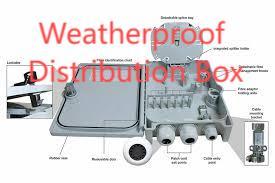Amid rising global temperatures and erratic weather patterns, the Weatherproof Distribution Box has emerged as a silent sentinel, securing power continuity for green energy transitions. This article examines breakthroughs in resilient electrical architecture enabling solar farms, smart cities, and rural communities to decarbonize without compromise.
1. Mountain Microgrids for Off-Grid Villages High-altitude communities face ice storms and UV radiation. Distribution units with heated panels and UV-resistant polymer casings store excess hydropower, delivering 24/7 electricity to Himalayan schools and clinics.
2. Agro-Voltaic Synergy in Precision Farming Solar panels atop greenhouses feed energy into irrigation systems via distribution nodes. These units withstand fertilizer corrosion and high humidity, optimizing water pumps and IoT soil sensors simultaneously.
3. Typhoon-Resilient Coastal Microgrids Mangrove reforestation zones integrate elevated distribution boxes with salt-air filtration vents. During storms, submarine cables reroute power to buoyant emergency units, keeping marine research stations operational.
4. Nante’s AI-Optimized Green Grid Core Nante’s weatherproof distribution box leverages self-cleaning solar-reactive coatings and 5G-enabled load balancing. Deployed in Singapore’s floating solar farms, it cuts maintenance costs by 40% through predictive algae management.
5. Disaster Response Mobile Power Banks Post-earthquake recovery relies on truck-mounted distribution systems. Waterproof, fire-retardant modules with wireless charging docks power rescue drones and medical tents across debris-filled terrain.
As climate adaptation becomes urgent, intelligent power distribution morphs from infrastructure into a survival toolkit. Innovations like the weatherproof distribution box prove sustainability and resilience are inseparable. Explore Nante’s eco-conscious designs at https://www.nante.com/product/.
